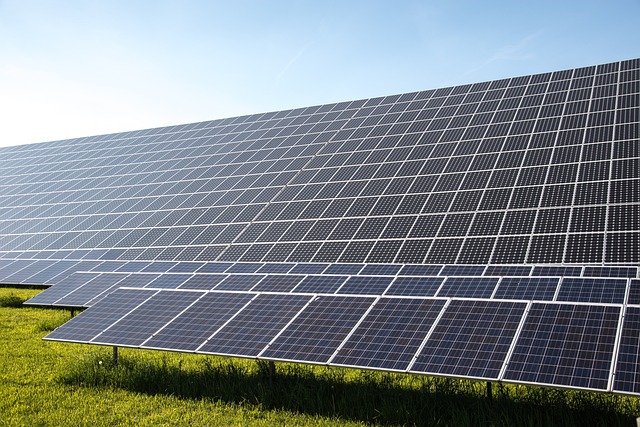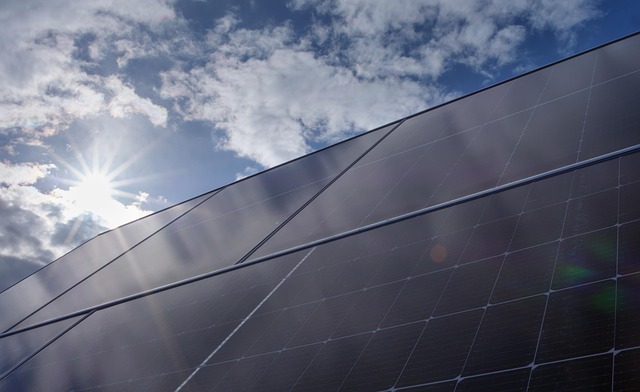
From Sunlight to Savings: How Solar Energy Reduces Your Electricity Bill
In an era where environmental concerns and rising energy prices dominate public discourse, solar energy emerges as a shining beacon of hope. By harnessing the power of the sun, homeowners can significantly reduce their electricity bills while contributing to a more sustainable future. This article delves into how solar energy can transform your electricity costs and what you need to know about investing in solar technology.
Understanding Solar Energy
Solar energy is derived from sunlight and can be converted into electricity using photovoltaic (PV) cells found in solar panels. These panels capture sunlight and convert it into direct current (DC) electricity, which is then converted to alternating current (AC) electricity— the format used by most residential and commercial appliances.
The fundamental allure of solar energy lies in its abundance. The Earth receives an estimated 173,000 terawatts of solar energy continuously, which is more than 10,000 times the world’s total energy use. This staggering statistic emphasizes the potential of solar energy to meet global energy demands sustainably.
How Solar Energy Reduces Electricity Bills
Adopting solar energy can lead to substantial financial savings. The impact on your electricity bill is influenced by several factors, including the size of the solar system, local energy prices, and available incentives. Here’s an overview of how solar energy contributes to savings:
1. Net Metering
One of the primary ways solar energy reduces electricity bills is through net metering. When solar panels produce more electricity than a home requires, excess energy can be sent back to the grid. In return, homeowners receive credits that offset future energy consumption. For example, if you produce more energy during sunny months, the excess credit can be used during times when your energy consumption exceeds production, such as winter months.
2. Reduced Utility Dependence
By investing in a solar panel system, homeowners reduce their reliance on traditional fossil fuel-based utilities. As energy prices rise, from both inflation and increased demand, having solar panels can provide a buffer against these price increases. While your initial investment may take time to recoup, your long-term financial stability increases as you become less vulnerable to utility rate hikes.
3. Solar Incentives and Tax Credits
Many governments provide various incentives to encourage homeowners to switch to solar energy, including tax credits, rebates, and grants. For instance, the Federal Investment Tax Credit (ITC) allows homeowners to deduct a significant percentage of their solar system costs from their federal taxes. These financial incentives serve to lower the installation cost and make solar energy more accessible, ultimately speeding up your return on investment from saved energy costs.
The Cost-Benefit Analysis of Solar Energy
The financial implications of transitioning to solar energy are substantial. An analysis of the costs and benefits can help homeowners make informed decisions about solar systems. To fully understand the economics of solar energy, one must consider both direct and indirect benefits.
Direct Benefits
Direct benefits include savings on monthly electricity bills and potential profits from surplus energy sold back to the grid. The average homeowner can save thousands over the lifespan of a solar system. Additionally, solar panels can eliminate or drastically reduce heating and electricity costs over time, contributing to greater financial security.
Indirect Benefits
Indirect benefits of solar adoption often include increased property value and a reduced carbon footprint. Homes equipped with solar panels tend to sell at higher prices compared to non-solar homes, as energy efficiency becomes a critical factor for buyers. Furthermore, the environmental benefits of using renewable energy source contribute to a reduction in greenhouse gas emissions, which is beneficial for the planet.
Factors Affecting Solar Energy Savings
While the benefits of solar energy are compelling, a variety of factors influence the extent of savings a household can expect. Homeowners considering solar should take the following elements into account:
Location
Your geographical location plays a pivotal role in determining the efficiency of solar panels. Areas with abundant sunlight throughout the year will yield greater energy production, resulting in more significant savings. Regions with fewer sunny days will see reduced energy generation from solar systems and might not benefit as much.
System Size
The size of your solar panel system greatly influences its overall effectiveness and your potential savings. A system too small may not generate enough power to cover all or part of your needs, while an oversized system may lead to wasted energy production unless you can utilize net metering effectively. When seeking a solar solution, it is vital to consider your average electricity consumption, roof space, and budget.
Energy Usage Patterns
Your household’s energy consumption plays a crucial role in maximizing solar savings. If your electricity usage peaks during off-peak hours, you will benefit less from solar energy produced during the day. Understanding your usage patterns can help you optimize the configuration of your solar system.
Steps to Go Solar
Transitioning to solar energy can seem complicated. However, with the right strategy and knowledge, the process can be seamless. Here are some steps to help you embark on your solar journey:
1. Evaluate Your Energy Needs
Understanding your energy consumption is the first step. Review your electricity bills over the past year to identify your average usage and peak periods. This information allows you to determine the sizing of your solar panel system.
2. Research Solar Options
Take the time to research different types of solar panels, inverters, and mounting systems. Compare brands, efficiencies, and warranties, to find a system that best suits your needs and budget.
3. Get Multiple Quotes
Contact various solar installers to obtain quotes. Be sure to ask about the total cost, installation timeline, warranties, and service agreements. Comparing multiple sources can lead to savings and better options.
4. Check Incentives
Research local, state, and federal incentives that may apply to your potential solar system. Understanding the financial assistance available can influence your decision while optimizing your savings.
5. Consider Financing Options
Explore different financing options, such as purchasing the system outright, leasing, or entering a power purchase agreement (PPA). Each option comes with its benefits and drawbacks, so weigh them based on your financial situation.
6. Installation and Beyond
Once you have chosen your solar system and financing, the installation process can begin. It typically takes a few days for a professional installer to set up the system. After installation, regular maintenance and monitoring are crucial to ensure optimal performance and longevity.
The Future of Solar Energy
As technology continues to evolve, the future of solar energy looks promising. Innovations in energy storage, efficiency improvements, and decreasing costs signal a bright horizon for solar energy adoption. Furthermore, the growing public awareness of climate change and energy independence suggests an increasing demand for renewable resources like solar power. The transition away from fossil fuels toward renewable energy sources not only mitigates environmental harm but also fosters economic resilience.
Conclusion
Switching to solar energy represents a financially and environmentally responsible choice for homeowners. With the potential to significantly reduce electricity bills, increase property values, and protect the planet, adopting solar technology is an investment in a sustainable future. With understanding and careful planning, transitioning from sunlight to savings can facilitate a brighter, greener, and more financially stable way of living.


